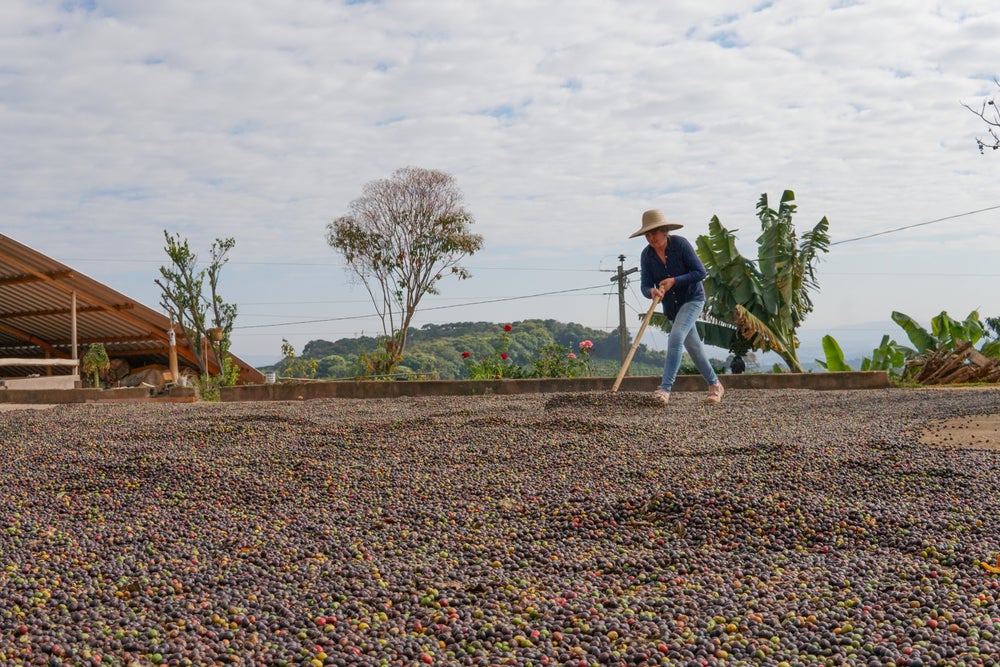About This Coffee
Owner Marcia de Jesus Souza Borges and her family are united by coffee. Both Marcia and her husband grew up on coffee farms. After their marriage, they purchased their first farm together.
In 2013, in the middle of a price crisis, Maria and her husband were having financial troubles. Her husband wanted to sell the farm to pay their debts. Maria, who had grown up on Nossa Senhora da Aparecida, wanted to keep the farm. That same year, with the help of local cooperative staff, Maria identified a lot that cupped extremely well. Maria took over farm operations and worked on replicating and expanding the quality of that isolated lot. Today, the farm is thriving with high productivity and excellent cup quality. Today, she is joined in her work by her daughter, Andressa and son, Bruno.
When she’s not cultivating coffee on her own farm, Marcia is coordinating a group of female coffee growers in the Mantiquiera region.
Harvest & Post-Harvest
Marcia and her family harvest ripe, red cherry and lay it to dry on patios. They rake cherry frequently to ensure even drying.
Coffee in Brazil
Just under 40% of all coffee in the world is produced in Brazil - around 3.7 million metric tons annually. With so much coffee produced, it’s no wonder that the country produces a wide range of qualities. Brazil produces everything from natural Robusta, to the neutral and mild Santos screen 17/18, to the distinctive Rio Minas 17/18. In recent years, Brazilian producers have also begun investing more heavily in specialty coffee production. Through our in-country partners in Brazil, including our sister company, we are able to provide a wide range of Brazilian coffees to our clients: from macrolot to microlot.
Today, the most prolific coffee growing regions of Brazil are Espirito Santo, São Paulo, Minas Gerais, and Bahia. Most Brazilian coffee is grown on large farms that are built and equipped for maximizing production output through mechanical harvesting and processing. The relatively flat landscape across many of Brazil’s coffee regions combined with high minimum wages has led most farms to opt for this type of mechanical harvesting over selective hand-picking.
In the past, mechanization meant that strip-picking was the norm; however, today’s mechanical harvesters are increasingly sensitive, meaning that farms can harvest only fully ripe cherries at each pass, which is good news for specialty-oriented producers.
In many cases and on less level sections of farms, a mixed form of ‘manual mechanized’ harvesting may be used, where ripe coffee is picked using a derriçadeira – a sort of mechanized rake that uses vibration to harvest ripe cherry. A tarp is spanned between coffee trees to capture the cherry as it falls.
With the aid of these newer, more selective technologies, there’s a growing number of farms who are increasingly concerned with – and able to deliver - cup quality.

